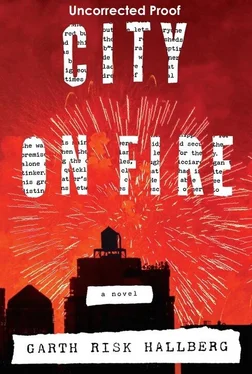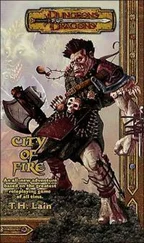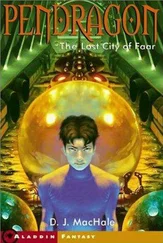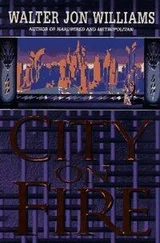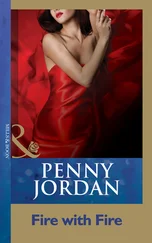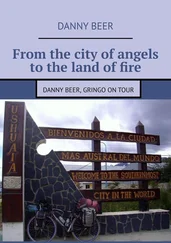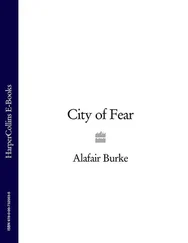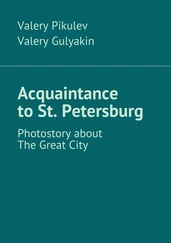There was still a narrow strip of real estate along the bed’s edge, I’m remembering, on the far side of Cate. He squatted to untie his own shoes and then stretched out on his side there, gingerly, as if we were about to wake up at any minute and tell him he had to go. And just then I thought of a story he’d told me when I was nine or ten, when I asked if he actually believed in God. The story was about Cate’s birth; at first I couldn’t see the connection. But everything had slowed down in the final stages before the crowning, he said, and the doctors who came periodically into the waiting room seemed concerned. One mentioned a surgical option, if something didn’t change in the next minutes. You were exhausted, I think, and they were concerned a labor this long could put the baby into distress. “I wasn’t sure if I did or didn’t believe,” Dad said, “but when that doctor left, I went into the bathroom and bolted myself into a stall and got down on my knees on the floor anyway.” Did he ever tell you this? The prayer was, characteristically, a kind of trade. “Let this baby be okay, and let Regan be okay, and I will give up caring about anything else.”
God, questions of existence aside, apparently held up His end of the contract, but I think now that Dad, for years afterward, had been feeling himself to be more or less in breach. I’m not making excuses, understand. Just saying I can sympathize. But then, would God really be a God who asked him to give up caring — who wanted everything? Maybe what Dad had learned the night of the blackout was that in fact he didn’t care about anything else, at least not in the same way he cared about me and Cate. And you. The way I think he still does care. I know, at least, that as I pretended to sleep that morning, I could feel him lying stiffly on his side, trying to feel his way back to the people who were right there, breathing.
And now here I am myself in much the same position, in this too-nice apartment on West Sixteenth Street. Groping. Feeling, as the sun comes up over the pavement outside. I’m imagining myself in the Galerie Bruno Augenblick, in some third space, watching through a slit in the wall as Dad reads these words, and you do. I’m trying to figure out what I want them to say here, where the tide of type has washed farthest up the walls, before the white starts to eat away at it again and the whole fucking thing dwindles away to a nothing that’s either meaningless or not. Or no; I’m imagining all of us here, in this third place, together. It’s a private space, or private-ish, but one finally big enough to leave room for other people. Dad’s there, and Julia, and Cate and Mercer and Samantha and the Prophet Charlie. And you’re there in the dark right next to me, Mom, your hand in my hand. Waiting for the end. Knowing each other as we do, we probably wouldn’t need to say anything out loud. But I guess what I would want to leave each of you with finally — tender some Evidence of, against a life’s worth of signs to the contrary — comes down simply to this: You are infinite. I see you. You are not alone.
This book was a shared labor. Grateful acknowledgment goes first to Diana Tejerina Miller, its editor, and to Chris Parris-Lamb, its agent.
Great thanks also to their colleagues: Andy Kifer, Rebecca Gardner, Will Roberts, and all at the Gernert Company; Paul Bogaards, Nicholas Latimer, Maggie Southard, Maggie Hinders, Chip Kidd, Amy Ryan, Lydia Buechler, Andrew Miller, Carol Carson, Andy Hughes, Robin Desser, LuAnn Walther, Sonny Mehta, and all at Knopf; U.K. editor Alex Bowler, Joe Pickering, and the team at Cape.
Further support and inspiration came from: Naomi Lebowitz, the Insight Lady of St. Louis; the Mylonas Scholars Program and the faculty of Washington University; Brian Morton; Chuck Wachtel, Breyten Breytenbach, Melissa Hammerle, and all at NYU/CWP; The New York Foundation for the Arts; Matthew Elblonk; C. Max Magee and The Millions ; Fordham University and Baruch and Sarah Lawrence Colleges; early readers Buzz Poole, Janice Clark, Jordan Alport, Fridolin Schley, and Juergen Christian Kill; Gary Sernovitz, Ron Hibshoosh, and The New York Public Library (especially David Smith and Jay Barksdale), for a measure of factual footing; Patti Smith, the late Lou Reed, the Clash, Springsteen, Townshend, Fugazi; Woodley Road ‘96 (D.T., M.M., Walker Lambert, Chris Eichler, Barton Seaver, Nuria Ferrer, Daron Carreiro, Kevin Mullin, the once-future Sports); H.P.; NYC; Vicki and Claude Kennedy; Bill and Christy Hallberg; Rachel Coley; Amos and Walter Hallberg.
Finally, and always, the deepest debt is to Elise White.
Paige Harbert and Derek Teslik graciously gave permission for the mixing in of elements (images, editorial choices, two guest columns, and a trip to the diner) from their respective ’zines, Firefly Cupboard and Helter Skelter, themselves works of folk art built on elements that go back as far as the Yippies. Though misprisions and outright fantasies are attributable to Richard Groskoph and his author, “The Fireworkers, Part 1’ ” is studded with bits of pyrotechnic detail, lore, taxonomy, mise-en-scène, and bibliography taken from Fireworks, George Plimpton’s beautiful book on the subject. In particular, Richard’s three paragraphs on the manufacture of a “bomb” lean heavily on Plimpton’s reporting. The photograph on p. TK appeared in Fireworks, too. Several background incidents and a line of dialogue in Book VII were reported in Blackout, by James Goodman. Though the text of the novel draws on too many books, songs, films, and people to count here (possibly anywhere), Ken Auletta’s The Streets Were Paved with Gold, Jonathan Mahler’s Ladies and Gentlemen, the Bronx Is Burning, Legs McNeil and Gillian McCain’s Please Kill Me, Philip Gourevitch’s A Cold Case, Joan Didion’s “Sentimental Journeys,” New York Calling (Marshall Berman and Brian Berger, eds.), and Up Is Up, but So Is Down (Brandon Stosuy, ed.) were among the key resources — as were, in a different vein, Douglas R. Hofstadter’s Gödel, Escher, Bach and Gregory Bateson’s Steps to an Ecology of Mind . The zen koan is a condensation of one quoted in Hofstadter. Some slight mishearing or forgetting may inflect the quotations of song lyrics; certain Scriptural passages in the novel depart subtly from extant translations; and the title of the third interlude (give or take a word) comes from an artwork by Damien Hirst. Finally, it should be noted that those seeking the ur-text for Nina Simone’s iconic performance, “In the Dark,” should seek Lil Green’s song under its original title: “Romance in the Dark.”
Garth Risk Hallberg was born in Louisiana and grew up in North Carolina. His writing has appeared in Prairie Schooner, The New York Times, Best New American Voices 2008, and The Millions ; a novella, A Field Guide to the North American Family, was published in 2007. He lives in New York with his wife and children.
